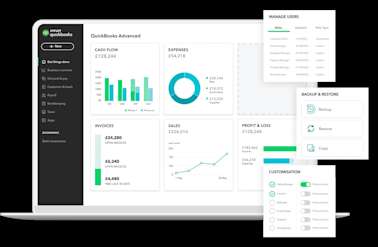
Cloud accounting
Accountant and bookkeeper product update - Your Books is now "Advanced"
Smart accounting software - no commitment, cancel anytime

FINANCE, BUDGETS AND CASHFLOW
If you want to run a successful business, then you need to effectively manage your cash flow to maintain financial health. Working capital must be as low as possible to improve your cash position. The key to controlling your stock levels is finetuning your purchasing volume with the sales trend and forecast data available to you.
Working capital is a representation of a company's ability to cover its liabilities with its assets. It provides investors with a view of the company's short-term financial stability. It also highlights whether a company can pay off debts and operate efficiently.
Effectively, it's the difference between assets and liabilities. The challenge business owners face is determining how to properly categorise liabilities and assets on the balance sheet. Can the company cover its short term debts? Is there a healthy amount of money to cover long term debt? Positive net working capital means a company will be able to meet short term liabilities and comfortably manage daily operations.
Read More: What is working capital? Formula and management tips
You can't calculate working capital without the formula. You will find the working capital formula below.
Inventory value + accounts receivable from the customer + rebates from suppliers – payables to the suppliers = working capital. This is the formula you will need for calculating working capital, however, you can also use the working capital calculator to simplify the process.
If you want to use the net working capital formula it is simply the current assets – current liabilities. If you hold assets of 125,000 and liabilities of 100,000, your net working capital is 25,000. The difference between the two is net is a total, but working capital gets reported as a ratio.
The working capital Calculator makes the process simple and will help you effectively manage your cash flow with quick calculations to understand your working capital ratio. Using the calculator is as simple as inputting your figures for inventory value, accounts receivable inventory from customers, rebates from suppliers, and accounts payable to suppliers. The calculator will do the rest.
Having your financial information neatly organised and in one place can help in determining your business’s working capital. QuickBooks Accounting Software can help your business keep track of that information as well as provide you with great insights.
9.00am - 5.30pm Monday - Thursday
9.00am - 4.30pm Friday